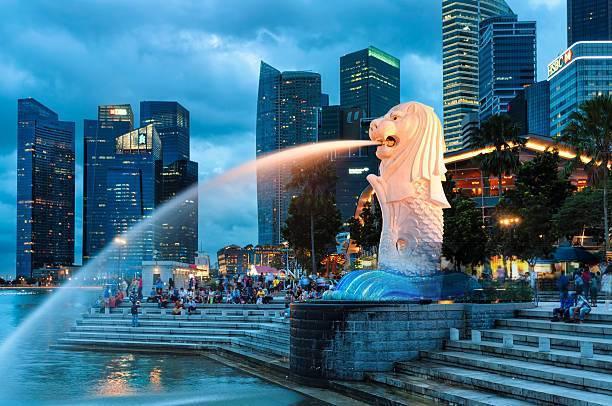Singapore stands as a global example of how a city can embrace high urban density without sacrificing liveability. While many cities struggle with overcrowding, congestion, and diminished quality of life, Singapore has managed to turn density into an asset, not a liability. Its approach to urban planning, community integration, and sustainability offers valuable lessons for cities worldwide.
Long-Term Vision and Strategic Planning
A key factor in Singapore’s success is its commitment to long-term urban planning. The city-state’s authorities have consistently planned for growth and renewal, ensuring that land use is optimised to meet both current and future needs. One innovative approach is the use of flexible land development policies, which allow developers to respond to changing market conditions. This flexibility ensures that urban spaces remain relevant and vibrant, adapting to economic cycles and demographic shifts.
Diversity and Inclusiveness in Urban Design
Singapore’s urban landscape is marked by a rich diversity of neighbourhoods and communities. The city actively fosters inclusiveness by supporting community centres and shared spaces where people from different backgrounds can come together. This focus on social cohesion helps build strong community bonds, reducing the sense of anonymity and isolation that can arise in dense urban environments.
Nature Integrated into the Urban Fabric
Despite its compact size and dense population, Singapore is renowned for its green spaces. The city’s “city in a garden” vision has resulted in over 50% green cover, with parks, gardens, and green corridors woven throughout the urban landscape. Waterways that once served purely functional purposes have been transformed into recreational spaces, providing residents with easy access to nature and promoting wellbeing.
Affordable and Mixed-Use Neighbourhoods
One of Singapore’s defining features is its network of mixed-use neighbourhoods. Essential amenities-such as shopping malls, libraries, schools, and childcare centres-are strategically located within walking distance or a short commute from residential areas. This design reduces the need for long commutes, making daily life more convenient and reducing the city’s overall carbon footprint. It also helps keep living costs manageable for residents.
Innovative Use of Public Spaces
Singapore is adept at making public spaces work harder. Infrastructure such as train lines, floodways, and rooftops are often designed for multiple uses. For example, a canal built to connect two waterbodies in Punggol town also serves as a recreational area, enhancing the value of surrounding developments and offering residents new leisure opportunities.
Commitment to Green Transport and Sustainable Buildings
Environmental sustainability is a cornerstone of Singapore’s urban strategy. The Green Mark incentive scheme encourages the development of green buildings, aiming for a large portion of the city’s building stock to meet sustainability certification standards. This reduces the urban heat island effect and lowers the city’s carbon footprint, contributing to a healthier and more comfortable living environment.
Relieving Density with Variety and Green Boundaries
To prevent monotony and overcrowding, Singapore employs a planning approach that mixes different land uses and varies building heights within neighbourhoods. Green boundaries, such as parks and nature reserves, are strategically placed between high-density areas, providing residents with much-needed breathing space and visual relief.
Housing Options: Balancing Choice and Accessibility
Singapore’s approach to housing is central to its liveability. The city offers a range of housing options catering to different needs and budgets, from public flats to private condominiums.
Resale HDB Flats in Singapore
Resale HDB flats in Singapore remain a popular choice for many, offering immediate availability and often larger living spaces compared to newer units. These flats are typically located in mature estates with established amenities, making them ideal for buyers who value convenience and community. In recent years, the resale market has seen robust demand, with prices rising steadily. For example, the average resale price for HDB units has increased significantly over the past decade, reflecting both strong demand and the city’s growing population.
Despite recent moderation in price growth, the market remains resilient. Resale HDB flats offer flexibility for buyers who do not wish to wait for new flats, and the range of options available ensures that families of all sizes can find suitable homes.
Condo for Sale Singapore
For those seeking private housing, the city offers a wide selection of condominiums. Condos for sale in Singapore appeal to buyers looking for additional amenities such as swimming pools, gyms, and enhanced security. These developments are often located in prime districts or near transport hubs, catering to professionals and families who prioritise lifestyle and convenience. The private housing market, like the public sector, has experienced steady demand, with prices remaining resilient even as growth moderates.
Managing Growth and Ensuring Affordability
Singapore’s government actively manages housing supply to ensure affordability and stability. The release of new flats provides prospective buyers with more options, easing demand pressure on the resale market. For instance, the number of new flats reaching the Minimum Occupation Period is set to increase in the coming years, bringing more resale flats into the market and helping to moderate price increases.
This careful calibration of supply and demand is crucial in preventing the kind of runaway price inflation seen in other global cities. It also ensures that housing remains accessible to a broad spectrum of the population, supporting social stability and cohesion.
Conclusion: Lessons from Singapore’s Urban Model
Singapore’s experience demonstrates that high-density urban living does not have to mean chaos or compromised quality of life. Through thoughtful planning, inclusiveness, integration of nature, and a commitment to sustainability, the city has created a model where density becomes a strength rather than a weakness.
Residents benefit from efficient transport, accessible amenities, vibrant public spaces, and a range of housing options-from resale HDB flats in Singapore to private condo for sale Singapore. As cities around the world grapple with rapid urbanisation, Singapore’s balanced approach offers a blueprint for building liveable, resilient, and inclusive urban environments for the future.



































